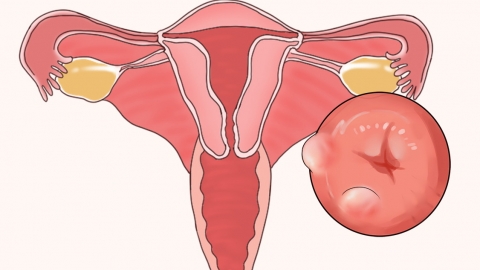What size of uterine cyst requires surgery?
Whether uterine cysts require surgery is not solely determined by their size, but also by the nature of the cyst, associated symptoms, and the risk of malignancy. Surgery is generally considered when the cyst's diameter is greater than 5 centimeters, symptoms appear, or malignancy is suspected. If there are concerns, it is advisable to seek medical consultation in advance. Detailed analysis is as follows:

If the uterine cyst has a diameter smaller than 5 centimeters, is confirmed to be benign (such as a simple cyst or chocolate cyst) after examination, and there are no symptoms such as abdominal pain, menstrual irregularities, or pressure, surgery is generally unnecessary. Regular ultrasound follow-ups can monitor the cyst's size and morphological changes. Some benign cysts may shrink or even disappear on their own. During this period, strenuous physical activity should be avoided to prevent cyst torsion or rupture.
When the uterine cyst has a diameter greater than 5 centimeters, or presents with significant symptoms such as abdominal pain, bloating, increased menstrual bleeding, frequent or urgent urination due to pressure, or if imaging reveals rapid cyst growth, irregular cyst walls, or solid components suggestive of malignancy, surgical treatment is necessary. The surgical approach is selected based on the cyst's characteristics and the patient's condition, such as laparoscopic cystectomy or open abdominal surgery. These procedures not only remove the lesion and relieve symptoms but also allow for pathological evaluation to confirm the cyst's nature, preventing delays in treating potential malignancies.
Discovering a uterine cyst does not warrant excessive anxiety. It is important to seek timely medical evaluation and complete necessary examinations. A physician will comprehensively assess whether surgery is needed based on the cyst's size, nature, and associated symptoms. Whether opting for observation or surgery, regular follow-ups are essential, along with adequate rest and avoiding abdominal trauma.




